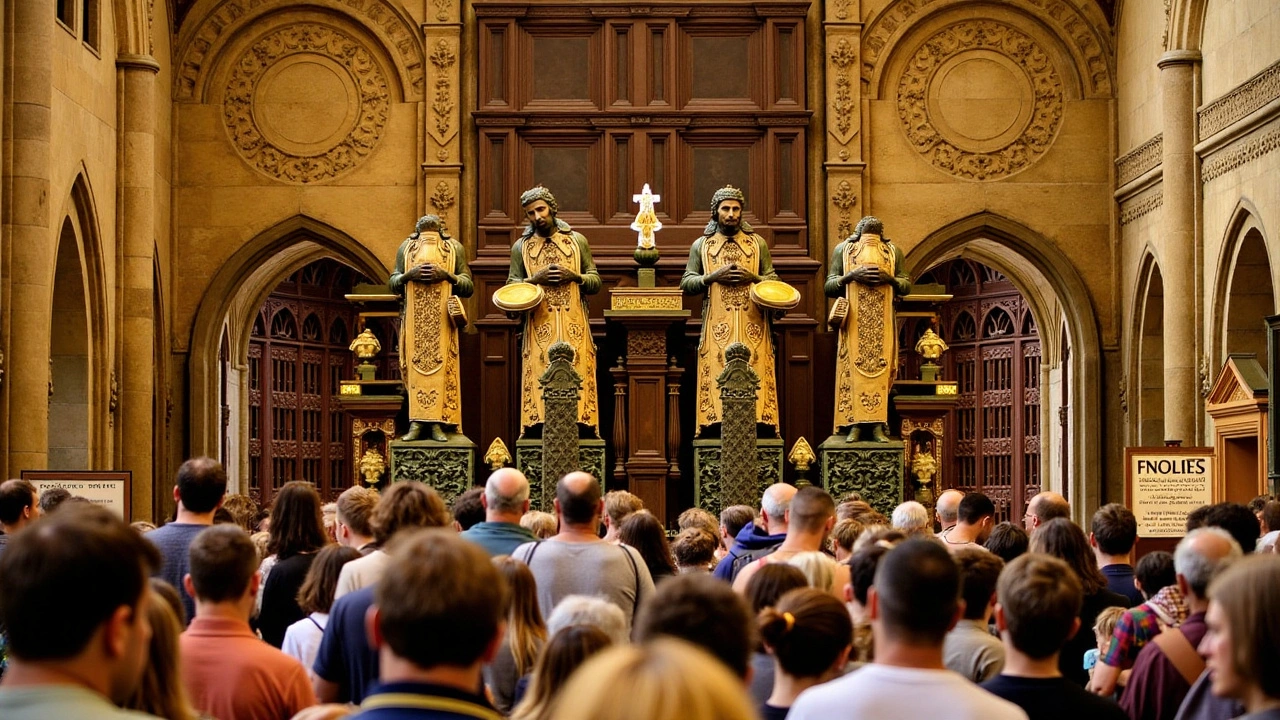DNA Analysis Confirms Final Resting Place of Christopher Columbus, Unraveling a Centuries-old Enigma
 Oct, 14 2024
Oct, 14 2024
The Final Chapter in Columbus's Legendary Odyssey
In a tale that seems worthy of a historic saga, the final resting place of the renowned explorer Christopher Columbus has, at last, been clearly identified, thanks to cutting-edge DNA analysis. For over five centuries, historians and enthusiasts alike have been intrigued by the mystery shrouding the whereabouts of the Voyager's remains. However, after meticulous research and with the aid of modern forensic science, it has been confirmed that the illustrious Columbus rests in the Cathedral of Seville, Spain. This discovery not only marks an important milestone in historical research but also quells years of speculation on such a high-profile enigma.
Unraveling Myths with Science
The quest to locate Columbus's remains has fascinated scholars for ages, primarily due to the series of relocations that followed his death. Originally buried in Valladolid, Spain, Columbus's body was later moved to Hispaniola, now known as Haiti and the Dominican Republic, in 1542. Further reburials occurred, first in Cuba in 1795, and ultimately in Seville by 1898. These movements collectively bred confusion over his final resting spot, propelling skeptics and historians alike into a fervent search for the truth. However, the advent of modern DNA technology has irrevocably settled this prolonged uncertainty.
Scientific Triumph
The discovery was masterminded by forensic scientist Miguel Lorente and his dedicated team. Delving into the archives of history and extracting genetic markers to cross-examine possible connections, they harvested samples from Columbus’s son Hernando and brother, Diego—both of whom are interred in the same cathedral. By meticulous examination and comparison, the researchers verified that the skeletal remains indeed belonged to Christopher Columbus. Speaking about this triumph, Lorente said, "Today it has been possible to verify it with new technologies, so that the previous partial theory that the remains of Seville belong to Christopher Columbus has been definitively confirmed."
A Revelation for History Buffs
This landmark discovery includes a cryptic reveal about Columbus's origins, a topic that has sparked heated discussions amongst historians for generations. The analysis undertaken by Lorente's team goes beyond unearthing just his burial site, as it peers into Columbus's nationality. Long regarded as a Genovese explorer who sailed under the Spanish flag, indications about his true ancestral roots have compelled history buffs to take note and revisit their established facts.
In the Spotlight
The conclusive findings from this research will soon receive widespread attention through "Columbus DNA: The Genuine Origin". This much-anticipated broadcast on Spain's national broadcaster TVE is poised to shed further light on the scientific journey undertaken to hunt down and verify Columbus's remains. It is set to detail the rigorous DNA techniques employed and provide insights into Columbus's real heritage. Enthusiasts are bound to discover many revelations that reinterpret Columbus's narrative.
Shaping Historical Perspectives
This scientific milestone doesn't just limit itself to identifying Columbus's final resting place but opens discussions that redefine the perspectives on one of history's most pivotal navigators. The story of Columbus has always been one that intricately intertwines tales of discovery, legacy, colonialism, and controversy. A certain enigma followed his name, from his uncertain origins to his oft-debated explorations. Through advancements in science and meticulous investigation, Miguel Lorente and the team have successfully blended technology with history, offering a narrative that reconciles past and present.
Conclusion
The verification of Christopher Columbus's burial site and origin is likely to encourage further explorations of historical narratives previously obscured by the sands of time. It stands as a testament to how far scientific methods can extend, merging with history to unlock secrets previously thought lost to time. This story not only resolves mysteries of the past but serves as a cornerstone for historians and researchers, reinvigorating the age-old quest for knowledge and truth amid our shared human heritage. As we venture deeper into the past through modern means, we continue to strengthen our grasp of who we are, drawing a direct line between today's advancements and yesterday's stories.